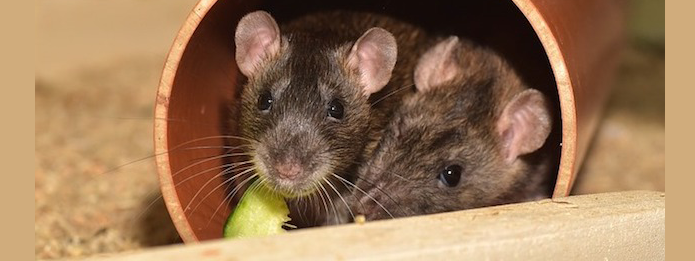How Do Mice Communicate?

One of the tricky things about controlling mice is that they love to communicate and they’re smarter than you might imagine. As a human, you won’t hear a lot of loud noises, growling or yelling, but these little critters do know how to communicate with each other. You can learn what their communication tactics are, however. That is one way you’ll know there’s an infestation and you need mice control Kitchener professionals on the job.
Squeaking and Chirping
Just like the cartoon mice you’re used to watching on TV, mice squeak and chirp in real life. The problem in locating mice by their chirping and squeaking is that you generally can’t hear it. A mouse squeak is typically made using a high pitched ultrasonic vocalization, which is something that can’t be heard by the human ear. These vocalizations are easily heard by other mice though, so it’s an effective method of communication for a mouse that doesn’t want the humans to know he’s taken over the house.
Most often, mother mice “sing” with these squeaks to their pups, and males will use these squeaking sounds to attract a female during mating. On some occasions, a human might hear some of these squeaking or chirping sounds. If you do hear it, you’ll notice it’s quite high, and you may not hear more than just one or two little squeaks.
Leaving Chemicals Behind
Mice urine carries pheromones, which are chemicals that send messages to other mice. When a female mouse hears the “song” of a male mouse ready to breed, she can urinate to send a message that she’s ready as well. When the male picks up on the chemical smell from the female’s urine, they will breed.
Male mice use their urine to mark territory. When another mouse is exposed to the chemical, it knows the area is already inhabited by another nest or single male. If a more dominant male leaves his urine around, less dominant mice will know it’s him by the chemical in the urine and will leave the area so as not to upset the dominant male. Take note that mice have a keen sense of smell, so they will know if a territory belongs to another mouse or otherwise.
Using Body Language
Most mice will communicate with their bodies. Body language tells other mice a lot about the mouse that’s sending the communication. For example, when a mouse wags his tail, he’s sending the other mice nearby a message of aggression. He may be looking to mate with a particular female, and will wag his tail to ward off other males that also want to mate with her. In addition to tail wagging, some more aggressive males will bang their tails, as if drumming on the ground. This sends other males a clear message to stay away. If another mouse wags or bangs his tail back at the original mouse that did so, he’s basically asking for a fight.
Another form of body language that is used in mouse communication is grooming. Female mice will groom each other as a sign they’re friends. Male mice will groom each other as a sign of who’s boss. Dominant males could “barber” less dominant males to create bald spots around the face. This shows all the other mice who have the power and who’s at the bottom of the totem pole.
Calling in the Mice Control Kitchener Professionals
If you have an issue with mice in or near your home, it’s time to call in the mice control Kitchener professionals. Though they seem pretty cute at times, mice carry dangerous diseases and can cause structural damage to your home. Whether you’ve heard their high pitched chirping or tail banging, have seen mouse urine, or have noticed droppings, there’s no time to wait. Contact Truly Nolen in Kitchener today.